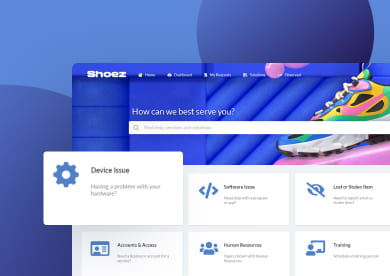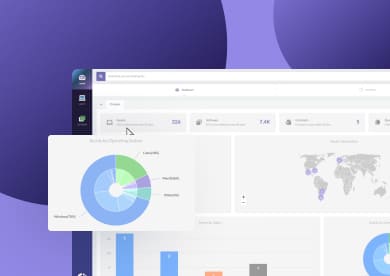Software deployment isn’t always as simple as it sounds. Keeping applications up to date, avoiding disruptions, and managing deployments efficiently requires the right approach. Some tools automate the process, making frequent releases easier, while others focus on security, compliance, and stability across different environments.
The best software deployment tool depends on how you work. Developers might need something that integrates with CI/CD pipelines, while IT teams may look for a platform that ensures consistency across an entire organization. The challenge isn’t just finding a good tool — it’s choosing one that fits your workflow.
After reviewing industry feedback and testing different platforms, we’ve put together a list of top software deployment tools. This guide covers their strengths, key features, and what to consider when making your decision.
Let's get started!

Software Deployment tools vs. Software Asset Management tools
Software deployment tools focus on one thing: getting applications and updates into the right environments efficiently. They automate installation, configuration, and updates to ensure consistency and reliability. If your main priority is optimizing release processes, a dedicated deployment tool is likely the best choice.
On the other hand, Software Asset Management (SAM) tools do much more than deployment. They track the entire lifecycle of software assets, from procurement and licensing compliance to usage monitoring and eventual retirement. Some IT Asset Management (ITAM) platforms, like InvGate, combine SAM with Hardware Asset Management (HAM), offering a complete view of all IT assets.
For organizations looking for more than just deployment automation, an ITAM platform can centralize and automate asset tracking, software License Management, and compliance management in one place.
While its deployment features might not be as specialized as those in standalone tools, the added benefits are significant:
- Full asset visibility: Manage both software and hardware in a single platform.
- License compliance: Avoid compliance risks by keeping track of software usage and enforcing policies.
- Security and patching: Ensure devices are up to date and secure without juggling multiple tools.
- Cost optimization: Identify underutilized software and reallocate licenses effectively.
If software deployment is just one piece of your IT strategy, an ITAM solution can help you manage everything in one place, streamlining both deployment and overall Asset Management.

Best software deployment tools
Based on our evaluations, here are our top picks for software deployment tools:
Progress Chef Automate
Progress Chef Automate, simply known as Chef, is an automation platform that transforms infrastructure into code, allowing for scalable and repeatable system configurations. It integrates seamlessly with various cloud providers and data centers, making it versatile for diverse environments. Users can define configurations in a declarative manner, which simplifies management and reduces manual intervention. Chef is particularly beneficial for organizations aiming to implement infrastructure as code practices.
Chef main features
- Infrastructure as code
- Automated Configuration Management
- Integration with major cloud platforms
- Community-driven "cookbooks"
Chef pricing
On their website, Chef claims they offer “customizable bundles and service options” for either on-prem or SaaS implementations. More pricing details are available upon request.
Chef user reviews and opinions
4.2 /5 stars in G2 - 4.1 stars in Gartner Peer Insights
Good experience. Although I personally like centralized PUSH architecture for configuration management, chef still does what it promizes. Overall, I am pleased that we use this product.
User review from Gartner (Sr. IT Manager)
Jenkins
Jenkins is an open-source automation server widely used for continuous integration and continuous delivery (CI/CD) pipelines. It supports numerous plugins, allowing integration with various tools and platforms. Setting up Jenkins requires some initial configuration, but its flexibility and community support make it a favorite among development teams. It's ideal for automating repetitive tasks in the software development process.
Jenkins main features
- Extensive plugin ecosystem
- Pipeline as code
- Distributed builds
- Integration with version control systems
Jenkins pricing
Jenkins is free to use, with community support available. Enterprise support can be obtained through third-party providers.
Jenkins user reviews and opinions
4.4 /5 stars in G2 - Not listed in Gartner Peer Insights
"Jenkins is a great tool in the discipline of continuous integration and continuous delivery. It is flexible and scalable. What I like the most about Jenkins is its huge plugin ecosystem, which allows for seamless integration with various tools and platforms."
User review from G2 (Data scientist)

Bamboo by Atlassian
Bamboo is a CI/CD server that ties automated builds, tests, and releases in a single workflow. Developed by Atlassian, it integrates seamlessly with other Atlassian products like JIRA and Bitbucket, providing a cohesive development environment. Bamboo offers pre-built functionalities, reducing the need for extensive plugin configurations. It's suitable for teams already invested in the Atlassian ecosystem.
Bamboo main features
- Native integration with Atlassian tools
- Automated merging
- Per-environment permissions
- Docker support
Bamboo pricing
Bamboo offers tiered pricing based on the number of build agents and remote agents required. To know the price, you have to request a quote. A 30-day free trial is available for evaluation.
Bamboo user reviews and opinions
4.1 /5 stars in G2 - 4.2 in Gartner Peer Insights
"Bamboo is a great tool for build and deploy code for various technologies. It integrates well with upstream CI systems and downstream CD systems also. Breadth of plugins support various utilities for building/deployment/integrating with other systems."
User review from Gartner (Senior Project Lead, IT)
Docker
Docker is a platform that enables developers to package applications into containers—standardized units that contain all the necessary components for the application to run. This ensures consistency across multiple environments, from development to production. Docker integrates well with various CI/CD tools and is beneficial for microservices architectures. It's best for teams looking to enhance application portability and scalability.
Docker main features
- Containerization of applications
- Efficient resource utilization
- Integration with orchestration tools like Kubernetes
- Cross-platform compatibility
Docker pricing
Docker offers a free personal edition targeted to individual developers and 3 subscription-based plans with advanced features and support. This are the prices per month (yearly):
- Docker Personal: $0
- Docker Pro $9
- Docker Team $15
- Docker Business $24
Docker user reviews and opinions
4.6 /5 stars in G2 - 4.5 in Gartner Peer Insights
“Docker’s portability, lightweight containers, and elastic capabilities with deploying new instances allows us to scale up and down and save on infrastructure resources.”
User review from Gartner (Director of IT Services)

Ansible
Red Hat’s Ansible is an open-source automation tool that focuses on simplicity and ease of use. It uses a declarative language to describe system configurations and orchestrates application deployments. Ansible requires minimal setup and doesn't need agents installed on target machines, reducing overhead. It's ideal for configuration management, application deployment, and task automation.
Ansible main features
- Agentless architecture
- Declarative configuration management
- Idempotent operations
- Extensive module library
Ansible pricing
Red Hat Ansible Automation Platform offers two support tiers: Standard and Premium. Standard includes 9 AM to 5 PM support, maintenance, and full access to the platform's features. Premium provides 24x7 support, maintenance, and the same level of access. Pricing varies based on your needs, so you'll need to contact Red Hat or an authorized partner for a customized quote.
Ansible user reviews and opinions
4.6 /5 stars in G2 - 4.5 in Gartner Peer Insights
"One of the most valuable features is automation & agentless.It has an easy-to-use interfaceit provides deep automation capabilities which help removing multiple manual processes in the IT workflow"
User review from G2 (Network security engineer)
NinjaOne
NinjaOne is a unified IT operations platform that offers remote monitoring and management, Patch Management, and software deployment capabilities. It provides a centralized interface for managing endpoints across various environments. The platform is user-friendly, making it accessible for IT teams of all sizes. It's particularly beneficial for managed service providers and IT departments looking for an integrated solution.
NinjaOne main features
- Remote monitoring and management
- Automated patch management
- Software deployment
NinjaOne pricing
NinjaOne offers automated software deployment as part of its endpoint management solution. While specific pricing details for the automated software deployment feature are not explicitly listed, NinjaOne's pricing model generally involves a cost-per-device structure, where the more devices you manage, the lower the cost per device.
Additionally, NinjaOne offers a 14-day free trial. For more detailed pricing information, you should contact NinjaOne directly.
NinjaOne user reviews and opinions
4.7/5 stars in G2 - 4.9 in Gartner Peer Insights
"Deployment of scripts and software is a breeze with just a small learning curve. I appreciate that they have an advanced delivery system if you need to add pre- and post- deployment scripts to an installer. Commands, changes, and adjustment are made almost instantly and to date there haven't been any outages that have crippled any functionalities."
User review from G2 (IT Lead Infrastructure and Security Analyst)
Puppet
Puppet is a configuration management tool that automates infrastructure provisioning and software deployment. It uses a declarative approach to define system states, ensuring consistency across environments. Puppet integrates with cloud providers, CI/CD pipelines, and monitoring tools, making it well-suited for large-scale infrastructure management. It's ideal for organizations that need robust automation with detailed compliance enforcement.
Puppet main features
- Declarative configuration management
- Role-based access control
- Automated infrastructure provisioning
- Integration with cloud platforms and CI/CD tools
Puppet pricing
Puppet offers two main versions with distinct pricing models. Puppet Open Source is free to get started. On the other hand, Puppet Enterprise and Enterprise Advanced (for larger organizations) provide custom pricing tailored to the specific needs of organizations, with many premium features available as separate add-ons.
Puppet Enterprise user reviews and opinions
4.4/5 stars in G2 - 4.0 in Gartner Peer Insights
"I came from a development background when I went in to operations. I found the way of working in operations to be lacking with regards to version management and staging, which to me are the main things Puppet brings to ops. There are several other tools that do the same, but the community participation for Puppet is excellent and Puppet has a pretty decent presence on the Windows platform. So for me there hasn't been a need to look any further."
User review from G2 (IT Ops)

CircleCI
CircleCI is a cloud-based CI/CD platform that enables automated software testing and deployment. It offers deep integration with GitHub, Bitbucket, and GitLab, allowing for seamless version control and build automation. CircleCI supports both containerized and virtual machine-based builds, providing flexibility for development teams. It's particularly useful for teams prioritizing fast and reliable automated deployments.
CircleCI main features:
- Cloud-based and on-premise deployment options
- Parallel execution for faster builds
- Integration with major version control systems
- Support for Docker and Kubernetes
CircleCI pricing:
- Free Tier: With no credit card required limited to 5 active users per month and 6,000 build minutes per month with a concurrency of 30 simultaneous builds.
- Performance Plan: Starts at $15/month, with costs increasing based on usage.
- Scale Plan: Starts at $2,000/month
CircleCI user reviews and opinions
4.4/5 stars in G2 - 4.7 in Gartner Peer Insights
"Overall experience with CircleCI has been positive. It's a solid cloud based CICD tool that is very easy to setup and get started. It integrates very easily with our source control system and has minimal setup after that. But it definitely has its quirks, including a steep learning curve for users more familiar with competitor products."
User review from Gartner (Cloud Operations Lead)
How to choose the right software deployment system for your goals
Before diving into features, it's important to define what you need from a software deployment tool. The right solution depends on who you are and what you're trying to achieve.
- For developers: Speed and automation are key. You’ll likely need a tool that integrates seamlessly with your CI/CD pipeline, supports containerization, and provides rollback options in case of failures. Tools like Jenkins, CircleCI, and Bamboo are great for automating builds, testing, and deployments with minimal manual intervention.
- For IT and operations teams: Reliability, security, and control matter most. You might prioritize configuration management, compliance enforcement, and centralized visibility over rapid releases. Tools like Ansible, Puppet, and NinjaOne offer strong automation capabilities while ensuring deployments are controlled and repeatable.
- For IT managers and business leaders: A broader approach might be required. If software deployment is part of a larger IT strategy, an ITAM solution like InvGate can integrate deployment with Hardware and Software Asset Management, license tracking, and security compliance. This ensures that deployments align with overall IT governance.
Key factors to consider
Once you've clarified your goals, you can evaluate software deployment tools based on:
- Integration capabilities: Does it work with your existing DevOps stack, cloud platforms, and CI/CD tools?
- Ease of use: Some tools require scripting and deep configuration, while others offer user-friendly interfaces.
- Scalability: Can it support your growth and handle deployments across multiple environments?
- Automation and configuration management: Do you need a tool that can also manage infrastructure, not just deploy software?
- Security and compliance: Are there features like role-based access control, audit logging, and compliance tracking?
- Pricing model: Does it offer open-source, subscription, or enterprise pricing, and does it fit your budget?
In conclusion
There’s no single best software deployment tool—just the best one for your needs. Understanding your goals, infrastructure, and workflow requirements will help you select the right tool to optimize your software deployment processes.
Hopefully, this guide helped clarify your options. If you're still deciding, testing a few platforms is the best way to find the right fit. No article can make the choice for you, but now you have a better idea of where to start.
For those looking for an all-in-one solution that combines software deployment with IT Asset Management, platforms like InvGate Asset Management provide a centralized approach to managing software and hardware assets. And you can test it yourself! Sign up for a 30-day free trial.















